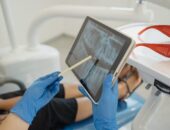The medical world is rapidly evolving, with regenerative medicine at the forefront of this change. This innovative branch of medicine involves regenerating damaged tissues and organs in the human body via replacements from the patient’s own body. This monumental shift from treating symptoms to curing diseases has sparked the increasing popularity of regenerative medicine services.
The Appeal of Regenerative Medicine
The appeal of regenerative medicine largely lies in its revolutionary approach to treatment. It offers the potential to heal damaged tissues and organs fully, offering solutions and hope for people who have conditions that today are beyond repair. This shift from traditional symptom management strategies to curing the actual cause of diseases is a leading factor driving the popularity of regenerative medicine.
Here are some reasons why regenerative medicine services are becoming more popular:
1. More Effective Treatments
Regenerative medicine indeed holds the potential to offer more effective treatments compared to conventional methods in certain cases. Here are some key points to consider:
- Addressing the Root Cause: Unlike some conventional treatments that focus on managing symptoms, regenerative medicine aims to address the root cause of medical conditions. This can lead to more sustainable and long-term improvements in health.
- Biomedical Engineering of Tissues and Organs: Regenerative medicine involves the use of advanced techniques, such as tissue engineering and stem cell therapy, to repair or replace damaged tissues and organs. This approach allows for the creation of functional tissues that can integrate with the patient’s body, promoting natural healing processes.
- Leveraging the Body’s Healing Abilities: Regenerative medicine often relies on the body’s innate ability to heal itself. By enhancing and directing these natural healing mechanisms, treatments can be more aligned with the body’s processes. Stem cells, for example, have the potential to differentiate into various cell types, promoting tissue repair and regeneration.
- Quality of Life Improvement: The goal of regenerative medicine is not only to treat diseases but also to improve the overall quality of life for patients. By promoting tissue repair and regeneration, patients may experience improved functionality and reduced disability.
- Potential for Personalized Medicine: Regenerative medicine has the potential for personalized treatment plans. By tailoring therapies to individual patients based on their unique biology, genetics, and medical history, the effectiveness of treatment may be enhanced.
In addition to its revolutionary implications in general medicine, regenerative medicine is also significantly impacting the field of wellness and aesthetics. The application of regenerative medicine in Fargo, for instance, has demonstrated how clients can benefit significantly from a holistic and innovative approach to overall wellness and aesthetic needs.
2. Potential for Less Invasive Procedures
Regenerative medicine can reduce the need for invasive surgeries. For many conditions, tissue regeneration can be achieved through simple injections, minimizing the risks and recovery time associated with surgery. This makes it a preferred choice for many patients, particularly those who are not ideal candidates for surgery.
3. Enhancement of Natural Beauty
One appeal of regenerative aesthetic treatments is their ability to enhance natural beauty. By harnessing the body’s self-reparation mechanisms, these treatments aim to restore the youthful vitality of the skin organically. Hence, patients receive natural results, as opposed to artificially altered appearances.
With the progression in regenerative medicine, aesthetic services have been given a new perspective. For example, the Evolvex treatment is a clear testament that regenerative medicine is to the aesthetic world. It utilizes advanced techniques to offer a wide range of non-invasive aesthetic treatments that help to rejuvenate and regenerate the skin, resulting in a more youthful appearance.
4. Minimal Side Effects
The claim that regenerative aesthetic procedures come with minimal side effects compared to traditional aesthetic treatments is generally accurate, and there are several reasons for this:
- Use of Natural Substances: Regenerative aesthetic procedures often utilize substances that are naturally found in the body, such as platelet-rich plasma (PRP) or adipose-derived stem cells. Since these substances are derived from the patient’s own body or are biocompatible, the risk of allergic reactions or adverse immune responses is minimized.
- Autologous Therapies: Many regenerative aesthetic procedures are autologous, meaning they involve using the patient’s cells or tissues. For example, autologous fat grafting involves transferring the patient’s fat from one area to another. Autologous therapies typically have a lower risk of rejection or adverse reactions because the body recognizes its cells as “self.”
- Reduced Use of Synthetic Materials: Traditional aesthetic treatments may involve the use of synthetic materials, such as dermal fillers or neurotoxins, which can carry a risk of side effects. Regenerative aesthetic procedures, on the other hand, focus on natural biological components, reducing the reliance on synthetic materials and potentially minimizing associated side effects.
- Tissue Regeneration Approach: Regenerative aesthetic procedures aim to stimulate tissue regeneration and repair rather than simply masking or altering the appearance of tissues. By promoting the body’s natural healing processes, these procedures may offer longer-lasting and more natural-looking results with fewer unwanted side effects.
- Minimized Trauma: Some traditional aesthetic procedures, such as invasive surgeries, may involve more trauma to tissues, leading to a higher risk of complications and longer recovery times. Many regenerative aesthetic procedures are minimally invasive or non-invasive, reducing trauma to tissues and contributing to a quicker and smoother recovery with fewer side effects.
IV Nutritional Therapy in Regenerative Medicine Services
Intravenous nutritional therapy, or IV nutritional therapy, is another exciting innovation in the realm of regenerative medicine services. This holistic approach enhances the body’s natural healing process by providing critical nutrients directly into the bloodstream, ensuring effective absorption and utilization by the body’s cells.
Benefits of IV Nutritional Therapy
IV nutritional therapy offers several benefits, including:
- Improving overall wellness by replenishing essential nutrients and hydration
- Accelerating the recovery process post-surgery or intense training routine
- Enhancing the body’s natural ability to fight off infections and boost immunity
Conclusion
The future of regenerative medicine lies in its potential to cure diseases thought to be incurable. With its promising outcomes in both wellness and aesthetics, its popularity is expected to increase in the coming years. People are always searching for less invasive, more natural, and effective ways to improve their health and appearance, a need that regenerative medicine uniquely fulfills. As the field continues to evolve, we anticipate witnessing more life-changing and revolutionary medical solutions in the world of regenerative medicine.



